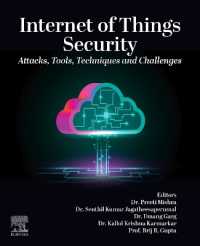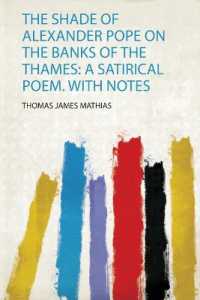- ホーム
- > 洋書
- > 英文書
- > History / World
Full Description
The religion question-the place of the Church in a Catholic country after an anticlerical revolution-profoundly shaped the process of state formation in Mexico. From the end of the Cristero War in 1929 until Manuel Ávila Camacho assumed the presidency in late 1940 and declared his faith, Mexico's unresolved religious conflict roiled regional politics, impeded federal schooling, undermined agrarian reform, and flared into sporadic violence, ultimately frustrating the secular vision shared by Plutarco ElÍas Calles and LÁzaro CÁrdenas. Ben Fallaw argues that previous scholarship has not appreciated the pervasive influence of Catholics and Catholicism on postrevolutionary state formation. By delving into the history of four understudied Mexican states, he is able to show that religion swayed regional politics not just in states such as Guanajuato, in Mexico's central-west "Rosary Belt," but even in those considered much less observant, including Campeche, Guerrero, and Hidalgo. Religion and State Formation in Postrevolutionary Mexico reshapes our understanding of agrarian reform, federal schooling, revolutionary anticlericalism, elections, the Segunda (a second Cristero War in the 1930s), and indigenism, the Revolution's valorization of the Mesoamerican past as the font of national identity.
Contents
Acknowledgments ix
List of Abbreviations xi
Glossary xv
Introduction 1
1. The Church and the Religious Question 13
2. Catholic-Socialists against Anti-Priests in Campeche 35
3. "The Devil Is Now Loose in Huejutla": The Bishop, the SEP, and the Emancipation of the Indian in Hidalgo 63
4. Beatas, Ballots, and Bullets in Guerrero 101
5. "Un sin fin de mochos": Catholic Cacicazgos in Guanajuato 157
Conclusion: The End of the Religious Question 219
Notes 227
Bibliography 295
Index 317






